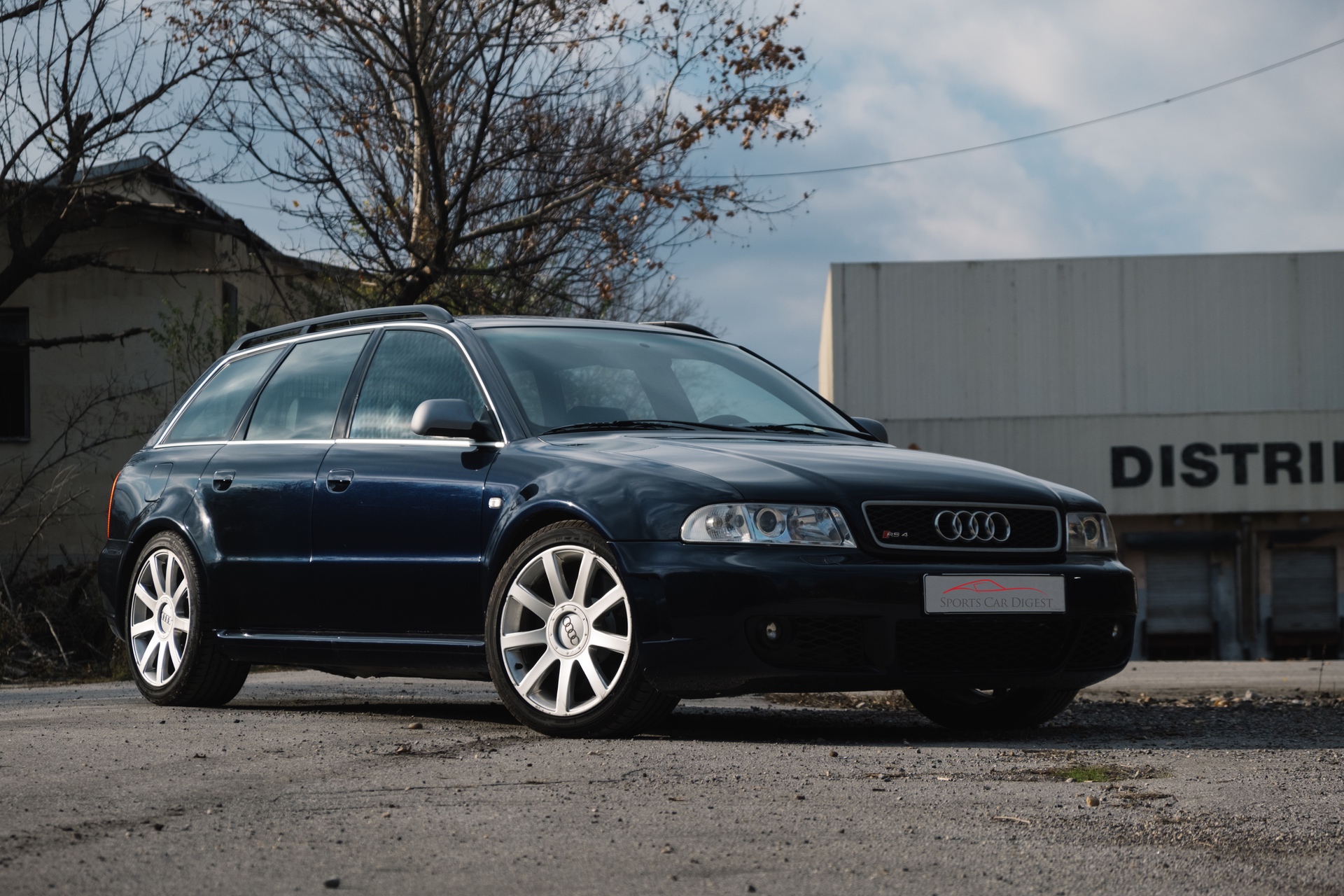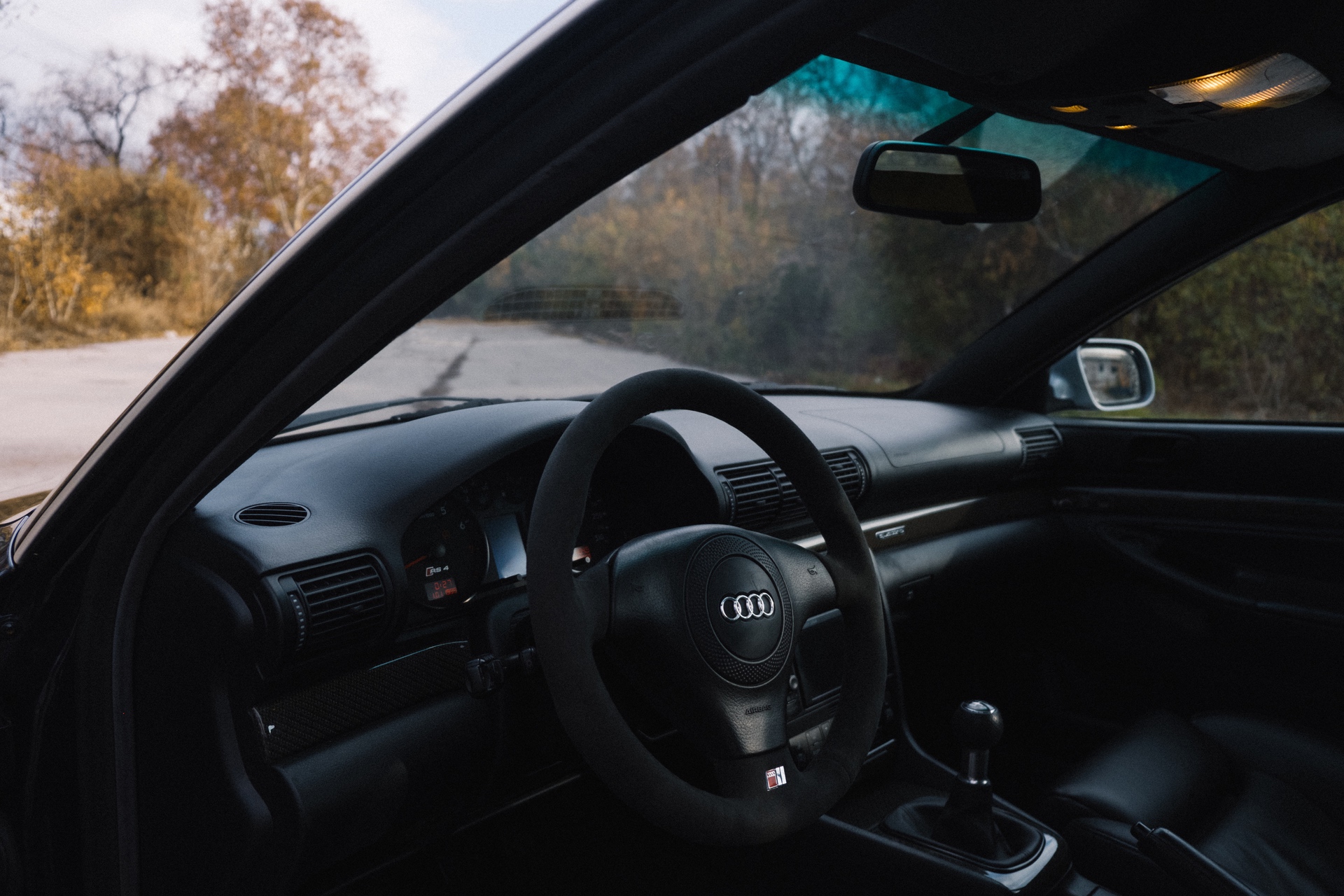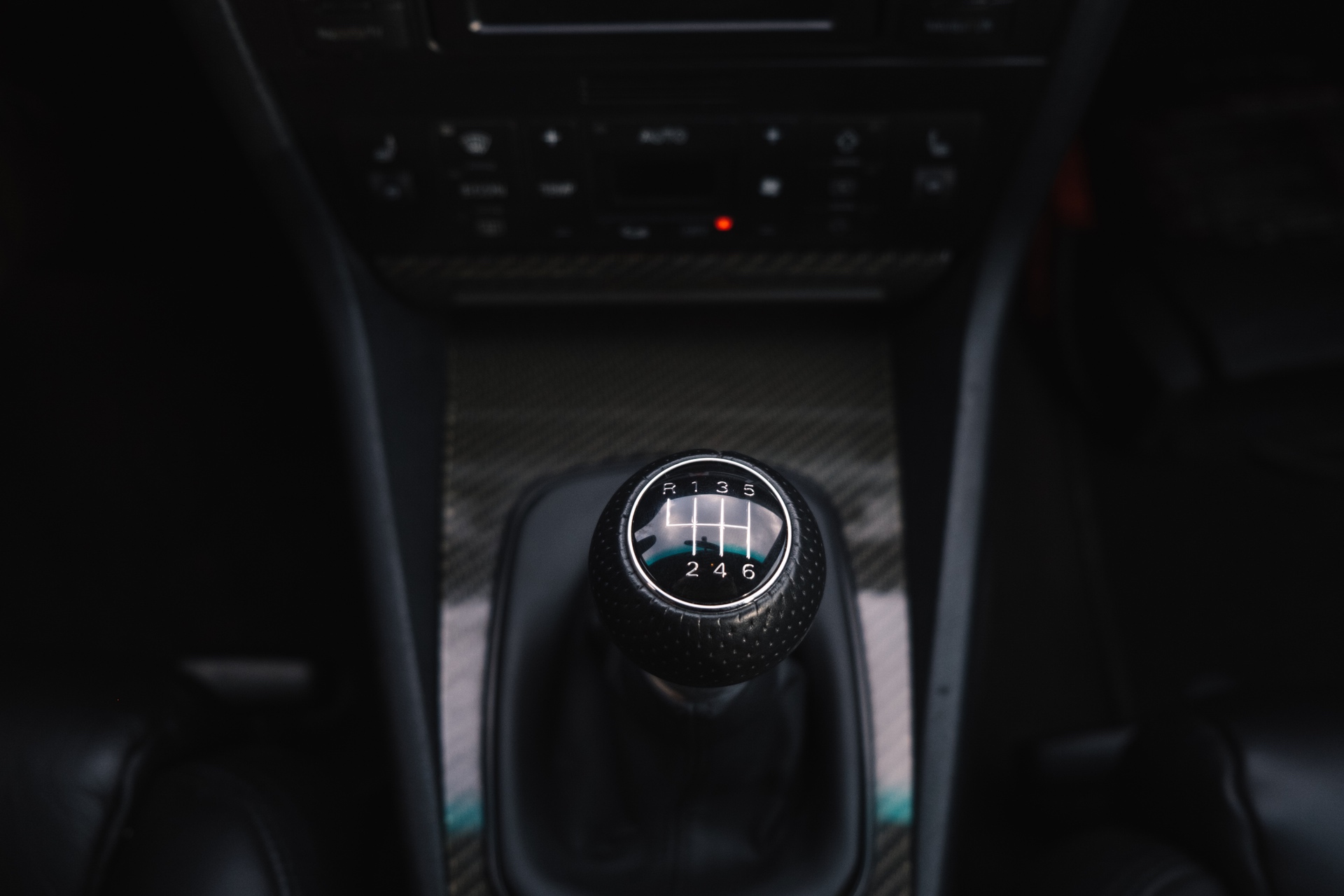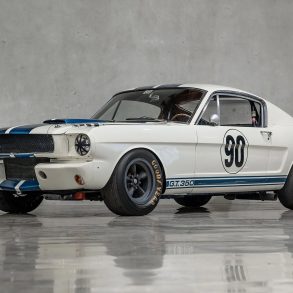Whereas the roots of the RS dynasty can be traced to one car before the RS4 B5, this twin-turbocharged superwagon was perhaps the most valuable one for Audi. Its fierce power delivery could put many thoroughbred sports cars to the test, and combined with usability of a family car, it was the most versatile and daily-friendly performance car of the early 21st century.
Without any doubt, the pioneering RS4 ticks all the right boxes for becoming a cherished modern classic, so let’s dig into its origins and technical details and see what exactly makes it one.
History & Development of the Audi RS4 B5
Audi’s first foray into the performance longroof segment was the RS2. Based on the Audi 90 Avant and built alongside Mercedes-Benz 500E in Porsche’s factory in Zuffenhausen, this supercar beater single-handedly kickstarted the superwagon craze in Europe while also saving Porsche in its toughest times.
In addition to putting Audi and its quattro all-wheel drive into the spotlight once again, the RS2 also established a new high performance badge. A tier above the sporty S cars, RS stood for RennSport or racing sport and was initially restricted to A4 and A6, until Audi eventually expanded RS models to a larger portion of its lineup. The rights to wear the RS badge were, in fact, so exclusive that the gap between the RS2 and its successor was five years.
By the time Audi quattro GmbH started developing the next RS car, the company from Ingolstadt completed its transition into the upmarket, introducing a new alphanumeric nomenclature to underline its newly attained status.
The 80 and 90 lineup thus became the Audi A4 and the range debuted with a rejuvenated design. Looking considerably more modern than the competition, the A4 was on par, or even better than its rivals at BMW and Mercedes-Benz. Alongside the revolutionary A8, it became the car that shaped the Audi brand as we know it today.
Three years after the A4 premiered in November 1994, Audi introduced the 261-horsepower S4 sedan and wagon, powered by a 2.7-liter twin-turbocharged V6 unit based on the 90° 2.8-liter V6 found at the top of the A4 range.
The S4 was met with universal appraise for its brisk performance and obedient quattro all-wheel drive. As such, it was just the right foundation for the new RS model.
As Audi grew and Porsche gained financial stability through the Boxster and the 996 911, the production of the RS4 was handled in-house at the Neckarsulm factory. The majority of engineering was carried out within Audi quattro GmbH department, whereas Cosworth, one of Volkswagen’s many 1990s acquisitions, took care of the engine development.
The RS4 was built from 1999 to 2001 in 6030 copies, and was available in Europe and selected global markets in both LHD and RHD variants. It was priced at around $60,180, an equivalent of $99,910 in today’s money. Unlike the S4 though, Audi didn’t bring the RS4 to North American soil, which will make it a highly desirable collector car—just like the RS2 has become in recent years.
Chassis, Bodywork & Interior of the Audi RS4 B5
Producing a direct successor to the RS2 in signature longroof body style, Audi Sport took on the A4 Avant shell, reinforcing the steel unibody skeleton and fitting bespoke body panels to improve its aerodynamic efficiency and differentiate it further from the S4, which only had a set of new bumpers.
That being said, the front wings got noticeably wider and so did the rear section including the doors, as well as door sills, leaving only the hood and the roof the same as on the non-RS cars. These substantial changes resulted in increased drag, with RS4 having 0.34cd compared to 0.30 and 0.31 (for the A4 and S4, respectively).
The front bumper featured three functional openings feeding fresh air to the radiator and side-mounted turbo intercoolers, as well as air extractor vents on the sides. At the back, the bumper got a more aggressive design with three decorative web-like inserts, a nod to the hood scoops from the Sport Quattro, and an opening for elliptical twin exhaust ends—a feature that later became signature for RS cars.
High impact colors were a special treat too. Not counting special order colors, the RS4 was sold in six shades: Black, Avus Silver, Imola Red, Goodwood Green, Misano Yellow and Nogaro Blue, arguably the most popular shade today.
Inside, the RS4 got carbon fiber trim, satellite navigation, and electrically adjustable Recaro bucket seats in leather or leather and Alcantara. The instrument cluster had an analog speedometer etched to 310 km/h or 200 MPH, a rev counter etched to 7000 RPM, a Voltmeter, a fuel gauge, and a simple central digital screen displaying vital information in real time.
In the Clubsport package, this superwagon got lightweight Recaro Pole Position buckets with 5-point harnessing and an Alcantara steering wheel and gear shift knob for increased grip.
Engine & Transmission in the Audi RS4 B5
For the powertrain worthy of the RS badge, Cosworth was entrusted to re-engineer the EU-spec AGB/AZB 90° V6 from the S4. The 30-valve 2.7-liter twin-turbocharged unit was a bulletproof foundation, and the engine development team was given free reins to hone it to perfection.
To achieve substantial power gains, Cosworth engineered the new AlSi7Mg aluminum alloy cylinder heads, giving them increased intake and exhaust ports and an enlarged air duct cross section. The engine block was fitted with stronger connecting rods, the pistons got dished heads, and the new crankshaft was forged out of higher grade steel.
The underside got a two-section oil sump keeping the engine lubricated during high G force maneuvers. The engine management unit was a revised Bosch Motronic ME 7.1, and the RS4 featured drive-by-wire electronic throttle control.
As an upgrade over the S4’s KKK K03 twin-turbo setup, the RS4 got BorgWarner KKK K04-26 parallel turbochargers with two side mounted intercoolers, running at 16 psi.
Thanks to these alterations, the RS4 got a sophisticated, highly capable powerplant that produced a whopping 375 horsepower at 6,200 RPM and 325 lb-ft of torque between 2,500 and 6,000 RPM, with the redline set at 7,000 RPM.
Unlike the sporty S4, which left a choice between a six-speed manual and a 5-speed ZF tiptronic automatic, the fully focused RS4 came equipped exclusively with a 01E FDP six-speed transmission with a traditional shifting pattern.
By default, the center Torsen differential split the torque between the axles in a 50:50 ratio. However, if needed, it could redistribute up to 66% of torque to either front or rear axle. Some sources also claim that Audi installed an 80:20 ratio Torsen differential as well.
Straight line performance-wise, the 3,571 lb RS4 B5 could sprint from a standstill to 60 MPH in 4.9 seconds, an impressive number even twenty years later. It could reach an electronically limited top speed of 155 MPH and an unrestricted top speed of 179 MPH. Still, it wasn’t just brutal straight line power delivery that made the RS4 stand out.
Suspension & Handling for the Audi RS4 B5
To make the RS4 B5 an all-round capable performance car in quite an unsuspecting longroof guise, quattro GmbH rehauled the aluminum front MacPherson and rear multilink suspension—lowering the car, stiffening the shocks and dampers, and installing thicker anti-roll bars both front and back. Clubsport trim lowered the suspension 15mm further, with stiffened shocks and dampers and harder bushings.
Due to having a heavy front with a weight distribution of 60:40, the RS4 was prone to understeering—and during the years, owners resorted to aftermarket suspension to balance out the weight bias.
Brakes, Wheels, & Tires on the Audi RS4 B5
Beefed up body panels and wide wheel arches enabled Audi Sport to fit 9-spoke wheels measuring 18×8.5 inches front and back, wrapped in 255/35 ZR18 Dunlop SP Sport 9000 high performance tires.
When the RS4 went on sale, it was under scrutiny as many owners reported wheel buckling even when crossing minor obstacles at regular traffic speeds. Audi didn’t address this issue officially, but independent research concluded that the wheels were purposefully cast out of aluminum alloy with lesser tensile strength to absorb impact from the road and lessen the stress on the suspension, preventing severe damage.
For more efficient stopping power, quattro GmbH developed a set of 360mm ventilated floating cast iron discs with double-piston floating calipers in the front and 312mm ventilated discs gripped by a single-piston floating caliper at the rear.
The Audi RS4 B5 as a Collector Car
Twenty years later, the RS4 has aged perfectly and is now hailed for its analogue character and immersive driving experience. However, in between its launch date and today, this über-wagon was also highly regarded for its tuning potential. Twin-turbocharged and overengineered, the Cossie 2.7-liter could extract hundreds of ponies more with a few simple tweaks.
Needless to say, the market for unmolested and modified examples is limited, driving the prices upwards all the way to an equivalent of $60,000 for pedigreed cars in pristine condition. Given that US-bound enthusiasts still have to wait for a few years to legally import it, the prices are expected to go north pretty soon.
Legacy of the Audi RS4 B5
Not only was the RS4 a worthy successor to the RS2, but it was an instant classic in its own right. With almost 400 horsepower on tap, it offered sublime supercar-like performance matched with the practicality of a family hauler.
After the RS4, Cosworth and quattro GmbH teamed up once again, transforming the C5 Audi A6 into the monstrous 4.2-liter twin-turbocharged V8-powered RS6 Avant. As Audi sold the legendary British engineering outlet in 2004, these two superwagons remained the only Cosworth-powered Audis ever created.
While it’s not the pioneering RS car, the first RS4 was perhaps the most important one, as it was the one to introduce the RS badge as an integral part of Audi’s new, more mature identity. Today, the RS4 is in its fourth generation and is a classic in the vast RS lineup, owing it all to the 1999 giant killer.
























